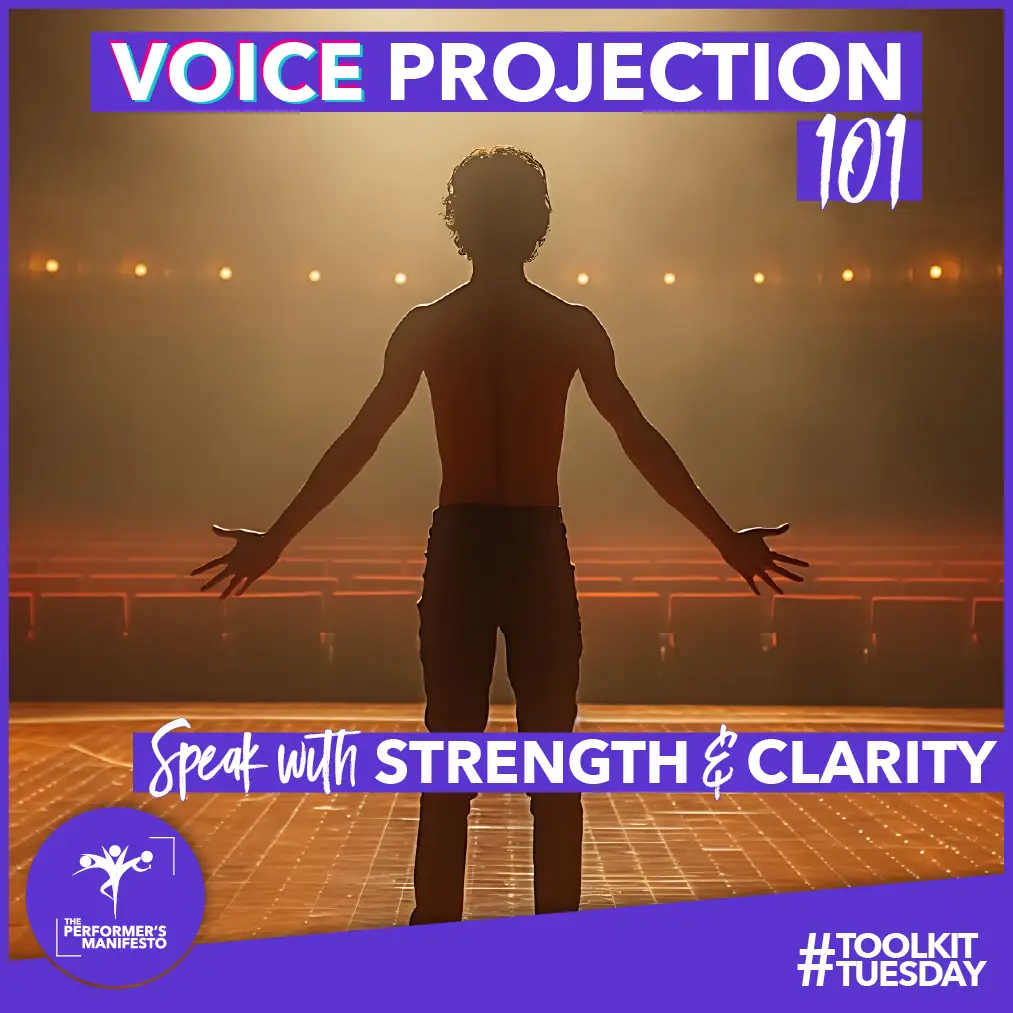As a performer, your voice is one of your most powerful tools. Whether you’re acting on stage, singing in a concert, or speaking in front of an audience, voice projection is essential. It ensures that every word reaches the back of the room, keeps the audience engaged, and boosts your confidence. But projection isn’t about shouting – it’s about using breath, technique, and awareness to create a strong, clear voice that carries.
Let’s explore how you can master the art of voice projection.
What Is Voice Projection?
Voice projection is the ability to use your voice loudly, powerfully, and clearly without straining. Unlike yelling, which can strain and damage vocal cords, proper projection uses breath control and resonance to create depth and clarity in your voice. Mastering projection allows you to:
- Hold the audience’s attention
- Deliver your lines with clarity and impact
- Convey emotions effectively
- Enhance your presence and confidence on stage
Techniques for Strong Voice Projection
1. Know Your Text Inside Out
The more confident you are in your lines, the more naturally you can project your voice. If you’re focused on remembering words, you may mumble or rush. Strong memorisation frees up mental space to focus on delivery and clarity.
2. Understand Your Performance Space
Every space has its own acoustics. A small rehearsal room differs vastly from a grand theatre or an outdoor amphitheatre. If possible, rehearse in the actual venue to understand how sound travels. If microphones will be used, adapt accordingly to avoid over-projection.
3. Warm Up Your Voice
A good vocal warm-up prepares your instrument for performance. Here are some effective exercises:
- Stretches: Reach up and over to activate your core, which supports projection.
- Sharp Exhales: Take deep breaths and release them in short bursts to engage breath control.
- Vocal Slides: Move between different pitches to warm up vocal folds.
- Elocution Exercises: Articulate clearly at varying volumes.
- Lip Trills and Yawns: Loosen tension in the lips and jaw.
Practising these regularly will improve your vocal endurance and power.
4. Master Breath Control
Your voice is powered by breath. Short, shallow breaths limit projection, whereas deep, diaphragmatic breathing allows for sustained volume and clarity. Try this simple exercise:
- Take a deep breath, expanding your abdomen rather than lifting your shoulders.
- Release the breath with a controlled ‘ha’ sound, feeling the power from your diaphragm.
- Repeat, gradually increasing the intensity and duration of sound.
5. Aim for the Back of the Room
Instead of directing your voice at scene partners or the front row, aim for the back of the room. Visualise your voice reaching the farthest person. Start with full projection and then adjust as needed.
6. Speak with Authenticity
Your voice should feel natural and connected to your character. If your projection feels forced, explore how your character’s movement and energy can support vocal delivery. The more relaxed and confident you are, the more naturally your voice will carry.
Projection Without Yelling
Many performers mistakenly believe that being loud means shouting. However, yelling strains the vocal cords and creates a harsh, unnatural sound. Instead, projection should:
- Come from the diaphragm, not the throat.
- Have a full, round quality, rather than a strained, high-pitched tone.
- Be supported by breath and resonance, not forced volume.
Try the Visualisation Technique
This exercise helps train your voice to carry naturally:
- Stand in a room and pick a spot on the opposite wall.
- Speak a phrase while focusing on sending your voice to that spot.
- Adjust your breath and volume to match the room size.
- Repeat in different spaces, increasing the distance each time.
With practice, you’ll develop a sense of how much breath and power is needed for different environments.
Projection is a vital skill for any performer, but it doesn’t have to be difficult. By understanding your space, warming up effectively, using diaphragmatic breath control, and aiming your voice with intention, you can deliver powerful, clear performances without strain.
So, the next time you hear the classic direction – “Project!” – you’ll know exactly what to do. Start implementing these techniques today and watch your presence on stage grow!
Additional Sources
- Adam K. Roberts, How to Project Your Voice: 5 Steps to Getting Loud, Backstage.com
- Lindsay Price, Projecting Your Voice Without Yelling, Theatrefolk.com


